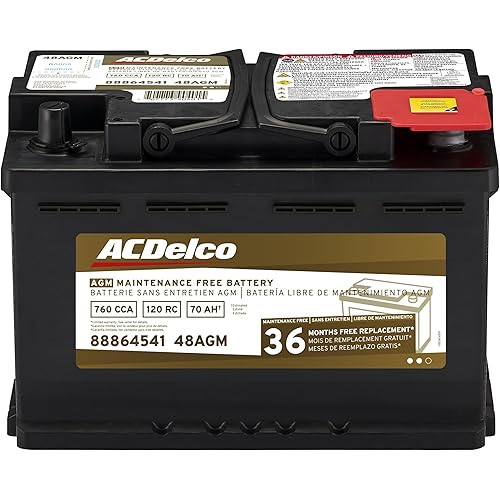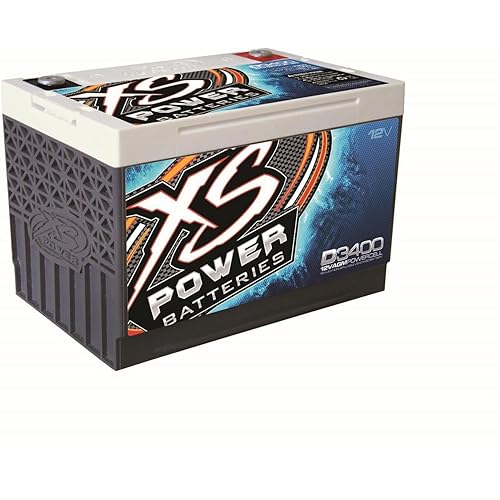LiTime 12V 50Ah TM Bluetooth LiFePO4 Battery,Lithium Deep Cycle Battery,Low Temperature Protection, Built-in 50A BMS, 4000+ Cycles, Perfect for Trolling Motors,Yacht, Marine, Boat,Fishing Finder










Buy Now, Pay Later
- – 6-month term
- – No impact on credit
- – Instant approval decision
- – Secure and straightforward checkout
Ready to go? Add this product to your cart and select a plan during checkout.
Payment plans are offered through our trusted finance partners Klarna, Affirm, Afterpay, Apple Pay, and PayTomorrow. No-credit-needed leasing options through Acima may also be available at checkout.
Learn more about financing & leasing here.
Selected Option
30-day refund/replacement
To qualify for a full refund, items must be returned in their original, unused condition. If an item is returned in a used, damaged, or materially different state, you may be granted a partial refund.
To initiate a return, please visit our Returns Center.
View our full returns policy here.
Style: 12V 50Ah (Low-Temp, Bluetooth)
Features
- Born for Trolling Motors As an official ABYC(American Boat & Yacht Council) and ASA (American Sportfishing Association)member, LiTime goes beyond standard and is committed to innovation.LiTime 12V 50Ah TM Lithium Iron Phosphate LiFePO4 Battery internal Grade A cells are UL tested, FCC, CE certified, and the outer shell is IP65 waterproof and dustproof rated, which is better suited for marine environments and wet environments.Advanced built-in TVS to prevent voltage spikes and excessive surges.Improve the battery's shock resistance when the boat breaks the waves, better suited for both leisure sailing and fishing competitions that require long endurance.
- Intelligent Bluetooth, Real-Time Monitoring LiTime 12V 50Ah TM smart lithium iron phosphate Battery is built-in upgraded intelligent BMS, integrated Bluetooth 5.0 , Bluetooth QR code sticker is designed on the top of the battery, Our deep cycle battery can be connected to your phone by scanning the code, no need to pair the code, easy to operate and the Bluetooth function allows you to track and manage the status of the battery accurately and easily in real time through the LiTime APP. It's also for Yacht, Marine, Boat, RVs,Vans, Motorhomes, Home Energy, Solar Power Storage, Off-Grid Solar Power System, Backup Power, ect.
- High Energy Density & BMS LTCP LiTime 12V 50Ah TM lithium iron phosphate LIFEPO4 battery adopts automotive grade lithium iron phosphate cells, which has stable performance, high energy density, high power and superior quality. Meanwhile, the intelligent BMS upgraded to add low-temperature cut-off function, which can automatically stop charging in a low-temperature environment, and has multiple functions to prevent the battery from over-charging, over-discharging, over-current and short-circuit etc., to better protect the battery.
- Smaller Size & Maximum Thrust LiTime 12V 50Ah LiFePO4 lithium battery is smaller than two 12V batteries (connected in series to form a 24V battery), IP65 waterproof and moisture-proof, and salt spray resistant, making it more suitable for marine environments with limited space; Supports up to 16 batteries connected (4P4S) to form a 48V 200Ah system, maximum capacity of 200Ah, energy of 10240Wh, and maximum load power of 10240W. Our Lithium Iron Phosphate batteries are ideal for trolling motor, fish finder, marine life battery, and more. 1.2C (60A) continuous discharge for 30 minutes, this 12V50Ah lithium battery ensures worry free operation at the maximum thrust of the motor.
- Trolling Motor Battery Cautions LiTime 12V 50AH lithium batteries is suitable for energy storage and not for starting, Maximum continuous discharge current is 1 C(Maximum 30 minute continuous discharge current of 1.2C). Suitable for trolling motors with 12V thrust up to 20-70 lbs. We offer easy-to-understand operator's manuals, phone support or online service with fast feedback within 24 hours. For advice on batteries or other trolling motor models, feel free to contact LiTime.
- Note: If OT terminals are attached directly with screws and their thickness is less than 2mm, add gaskets for lock attachment to prevent loosening and overheating.
Brand: Litime
Product Dimensions: 7.68"D x 6.54"W x 6.77"H
Number Of Cells: 1
Terminal: M8
Manufacturer: Litime
Manufacturer: Litime
Brand: Litime
Model: 12V 50Ah TM BT
Item Weight: 11.27 pounds
Product Dimensions: 7.68 x 6.54 x 6.77 inches
Item model number: 12V 50Ah TM BT
Batteries: 1 Lithium Ion batteries required. (included)
Manufacturer Part Number: L12V50-50-TM-BT-4-A38-01
Date First Available: August 6, 2024
Frequently asked questions
To initiate a return, please visit our Returns Center.
View our full returns policy here.
- Klarna Financing
- Affirm Pay in 4
- Affirm Financing
- Afterpay Financing
- PayTomorrow Financing
- Financing through Apple Pay
Learn more about financing & leasing here.
Similar Products
Top Amazon Reviews





















